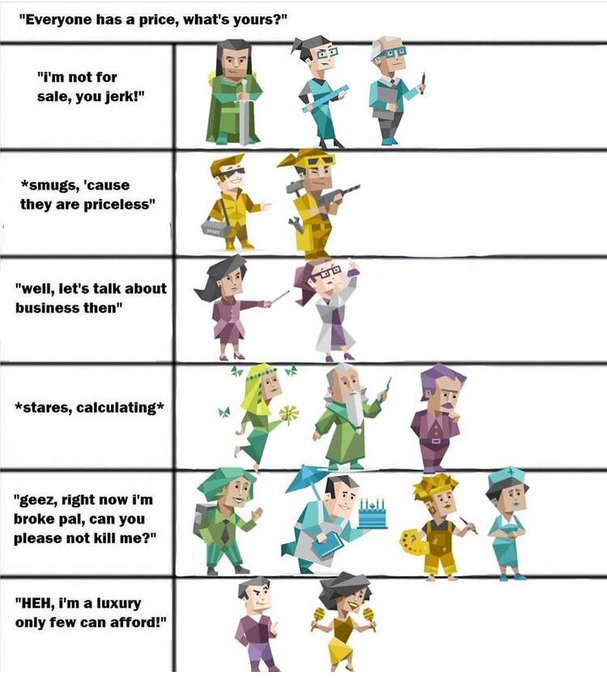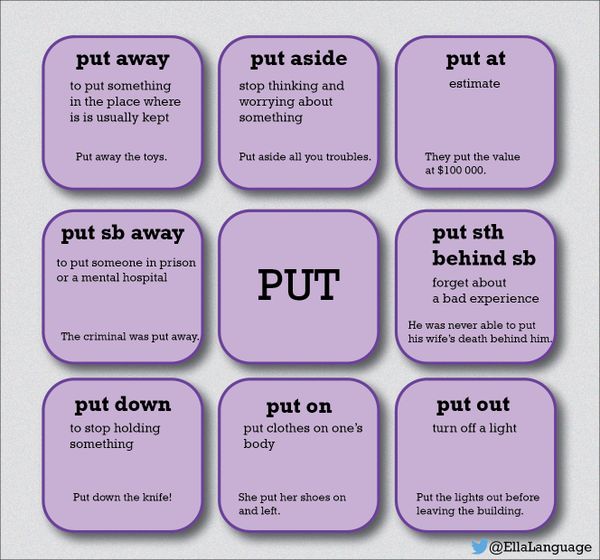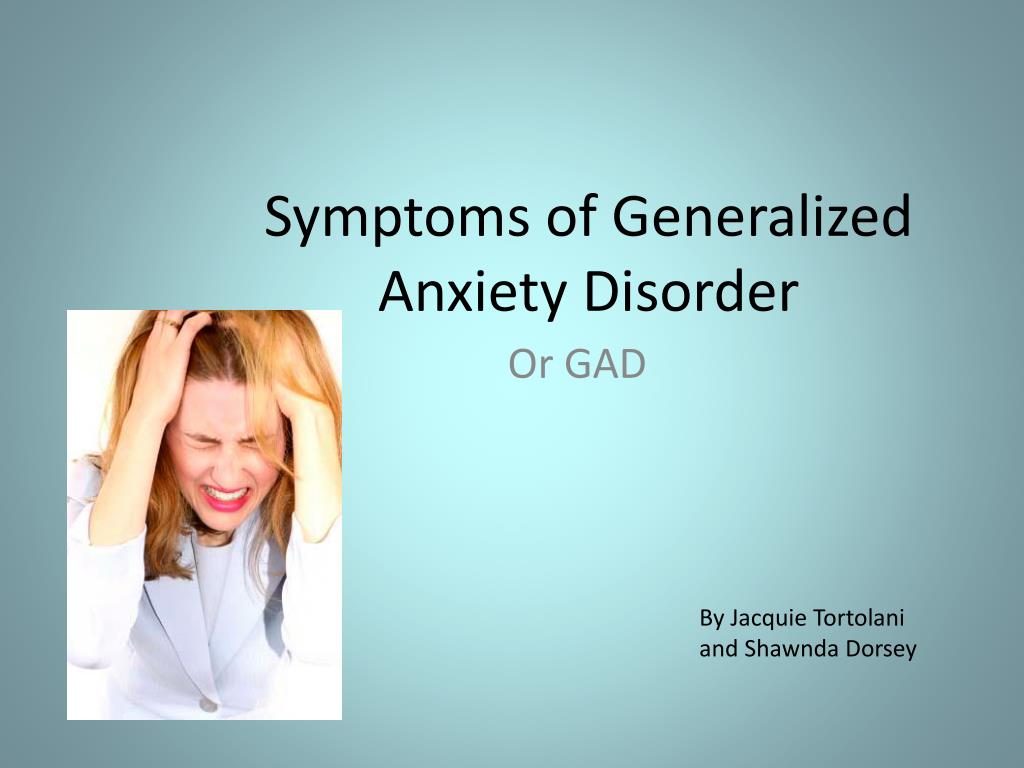Who can be hypnotized easily
All About Hypnosis and Hypnotherapy
Hypnotism puts you into a state of “focused concentration,” during which you’re vaguely aware of your surroundings — you just don’t care about them. There are different stages of hypnosis, some deeper than others. But when you’re in any of them, your imagination is open to suggestion.
The suggestions made to you while you’re hypnotized are part of hypnotherapy. This term, sometimes used interchangeably with hypnotism, simply describes the stuff that is suggested to you while you’re hypnotized to help make you better after the session is over. Often the suggestions are images — picturing your arm going numb, picturing yourself relaxed — rather than orders to “stop hurting.”
Over the years, hypnotism has had a rather seedy reputation. This bad rep can be traced back to the late 18th century, when Franz Mesmer, the guy who introduced hypnotism into medicine, got himself kicked out of France for his fraudulent healing practices. Hypnosis was soon discovered to have genuine healing potential, but it was exploited by enough crackpots and vaudeville magicians to stay associated with superstition and evil for a long time.
Today, though, hypnosis is about as mainstream as an alternative therapy can get. It has been recognized as a valid medical therapy since 1955 in Great Britain and since 1958 in the United States. Many mainstream doctors (particularly anesthesiologists and surgeons) are trained in hypnotherapy, as are a good number of dentists, psychotherapists, and nurses.
So why is hypnosis still considered alternative? Partly because it doesn’t work for everyone. But largely because no one really can explain how it works. Experts even debate whether hypnosis produces an altered state of consciousness at all. Right now, investigators are scrambling to get some of these answers, and already a few theories are floating around. But for now the whole business is still pretty much a mystery.
Even so, many mainstream health practitioners are willing to accept (and use) hypnotherapy because it happens to help their patients. They rest their case on many solid studies that show what hypnotherapy can do — even if researchers don’t yet understand how.
Good candidates for hypnosis
If you’re trying to lose weight, stop smoking, control substance abuse, or overcome a phobia, hypnosis may be worth a try. And if you’re unhappy with your current treatment for warts or other skin conditions, asthma, nausea, irritable bowel syndrome, fibromyalgia, migraines, or other forms of pain, discuss the possibility of hypnotherapy with your M.D.
Hypnosis can work for almost anyone, though some people have an easier time than others. If you’re lucky, you’ll be one of the few people (about 5 to 10 percent of the population) who is highly susceptible to hypnotic suggestion. Some of these folks reputedly can be hypnotized (with no other anesthesia) before surgery and feel no pain. But even if you’re not in this group, chances are high that hypnosis can help you: About 60 to 79 percent of people are moderately susceptible, and the remaining 25 to 30 percent are minimally susceptible.
Children and young adults are often good candidates for hypnosis, perhaps because they’re so open to suggestion and have active imaginations.
If you don’t trust your therapist, or don’t believe that hypnotism can work for you, it probably won’t. Hypnotism can only work if you’re willing for it to work and you have a clear idea about what you want it to do for you.
Possible harmful effects
Hypnosis can be dangerous if you’re suffering from a serious psychiatric condition (particularly psychosis, organic psychiatric conditions, or antisocial personality disorder). These people should consult with a psychiatrist familiar with hypnosis before trying it.
Self-Hypnosis Methods
Many people believe that all hypnosis is self-hypnosis — that is, by trusting in the hypnotist you essentially brainwash yourself. So even if you go to a hypnotherapist, you can’t regard her as anything more than a facilitator who helps you hypnotize yourself.
But according to a formal school of hypnosis, you can put your mind into a high state of concentration without a facilitator. Most people have found themselves in this place naturally — by daydreaming, losing themselves in a novel, or spacing out as they drive. The idea is to get yourself into an altered state during which your whole attention is focused in a single place.
The idea is to get yourself into an altered state during which your whole attention is focused in a single place.
Can these altered states affect your behavior in any way? Well, experiencing these altered states probably can’t cure your stage fright or stop your smoking as effectively as formal sessions with a hypnotherapist might. But you can certainly try self-hypnosis to work toward these kinds of goals — as well as to relax and/or distract your mind from pain or cravings.
If you want to use self-hypnosis most effectively, you’re best off starting with directions from a trained therapist — who will help you make sure that you’re doing it right. You’ll discover how to relax yourself (whether that means swinging a pendant in front of your eyes or meditating) and use your thoughts to contact your unconscious mind. When your unconscious takes over and tells your body what to do (such as lifting an arm), you’re in an hypnotic state and ready to respond to suggestion.
Watch out for books and audiotapes promising to target your subliminal mind to help you stop smoking, improve your personality, or whatever — especially if they promise to make these changes overnight. Effective hypnosis of any sort often needs to be tailored to your particular mind (by a teacher or yourself) and almost always requires weeks or months of practice.
Effective hypnosis of any sort often needs to be tailored to your particular mind (by a teacher or yourself) and almost always requires weeks or months of practice.
Finding a Hypnotherapist
Use our Therapist Directory to find an experienced hypnotherapist in your community.
If your hypnotherapist also happens to be a licensed health care professional, you may be able to get reimbursement from your health insurer. Using a licensed health care practitioner is a good idea anyway. Because no states license hypnotherapists per se, this license — plus certification by the American Board of Hypnosis or the American Council of Hypnotist Examiners — is a good clue to competence.
A good therapist will:
- Explain the different stages of consciousness to you
- Assure you that hypnosis won’t make you do anything you don’t want to do
- Review your past experience with hypnotism and answer your questions
- Often offer to do a demonstration on someone else
- Never promise to perform miracles
Study explains why some people are easier to hypnotize than others
- Download PDF Copy
Oct 5 2012
Not everyone is able to be hypnotized, and new research from the Stanford University School of Medicine shows how the brains of such people differ from those who can easily be.
The study, published in the October issue of Archives of General Psychiatry, uses data from functional and structural magnetic resonance imaging to identify how the areas of the brain associated with executive control and attention tend to have less activity in people who cannot be put into a hypnotic trance.
"There's never been a brain signature of being hypnotized, and we're on the verge of identifying one," said David Spiegel, MD, the paper's senior author and a professor of psychiatry and behavioral sciences. Such an advance would enable scientists to understand better the mechanisms underlying hypnosis and how it can be used more widely and effectively in clinical settings, added Spiegel, who also directs the Stanford Center for Integrative Medicine.
Spiegel estimates that one-quarter of the patients he sees cannot be hypnotized, though a person's hypnotizability is not linked with any specific personality trait. "There's got to be something going on in the brain," he said.
Hypnosis is described as a trance-like state during which a person has a heightened focus and concentration. It has been shown to help with brain control over sensation and behavior, and has been used clinically to help patients manage pain, control stress and anxiety and combat phobias.
Hypnosis works by modulating activity in brain regions associated with focused attention, and this study offers compelling new details regarding neural capacity for hypnosis.
"Our results provide novel evidence that altered functional connectivity in [the dorsolateral prefrontal cortex] and [the dorsal anterior cingulate cortex] may underlie hypnotizability," the researchers wrote in their paper.
For the study, Spiegel and his Stanford colleagues performed functional and structural MRI scans of the brains of 12 adults with high hypnotizability and 12 adults with low hypnotizability.
Related Stories
- New transcranial magnetic stimulation array can help stimulate deeper tissue within the brain
- Enveloped viruses show greater cross-species transmission, according to new research
- Oral bacteria may be a contributory factor in patients developing brain abscesses
The researchers looked at the activity of three different networks in the brain: the default-mode network, used when one's brain is idle; the executive-control network, which is involved in making decisions; and the salience network, which is involved in deciding something is more important than something else.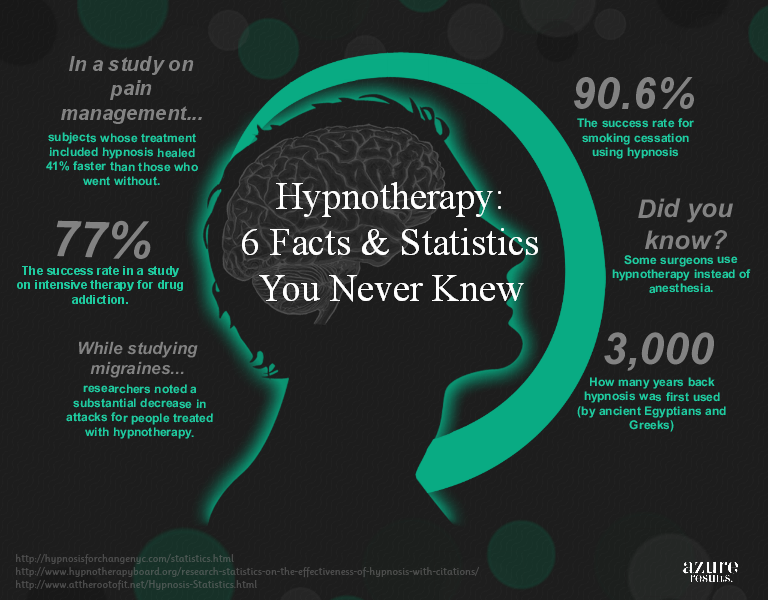
The findings, Spiegel said, were clear: Both groups had an active default-mode network, but highly hypnotizable participants showed greater co-activation between components of the executive-control network and the salience network. More specifically, in the brains of the highly hypnotizable group the left dorsolateral prefrontal cortex, an executive-control region of the brain, appeared to be activated in tandem with the dorsal anterior cingulate cortex, which is part of the salience network and plays a role in focusing of attention. By contrast, there was little functional connectivity between these two areas of the brain in those with low hypnotizability.
Spiegel said he was pleased that he and his team found something so clear. "The brain is complicated, people are complicated, and it was surprising we were able to get such a clear signature," he explained.
Spiegel also said the work confirms that hypnotizability is less about personality variables and more about cognitive style. "Here we're seeing a neural trait," he said.
"Here we're seeing a neural trait," he said.
The authors' next step is to further explore how these functional networks change during hypnosis. Spiegel and his team have recruited high- and low-hypnotizable patients for another study during which fMRI assessment will be done during hypnotic states. Funding for that work is being provided by the National Center for Complementary and Alternative Medicine.
Source:
Stanford University Medical Center
Posted in: Medical Science News | Medical Research News
Tags: Alternative Medicine, Anxiety, Brain, Cortex, Education, Hospital, Hypnosis, Imaging, Magnetic Resonance Imaging, Medicine, Pain, Psychiatry, Psychology, Radiology, Research, Stress, X-linked
Comments (0)
- Download PDF Copy
Who can be hypnotized?.
 HYPNOSIS. Hidden Depths: A History of Discovery and Use of
HYPNOSIS. Hidden Depths: A History of Discovery and Use of Who can be hypnotized?
American hypnotherapist Milton Erickson believed that if someone cannot be hypnotized, it is only the fault of the hypnotist. Anyone can be hypnotized. Who can resist the infectious enthusiasm of the crowd? Who doesn't get excited about military marches? Try not to tense up while watching an exciting thriller on TV and not slide down on the edge of your chair. We like to be conformists, we like it when others accept us. We do not like internal and external conflicts. The press of conformity is what makes us receptive. Some researchers define hypnosis as a state of heightened suggestibility. Even if this is not an entirely adequate and complete definition, there is a particle of truth in it: increased suggestibility is the most necessary component of susceptibility to hypnosis (hypnotizability). And since we all have some kind of suggestibility, therefore, any of us can be hypnotized.
Of course, we are not all susceptible to the same degree. The introduction said that there are three key components of hypnosis: perception (or focused attention), dissociation, and suggestibility. Highly hypnotizable people have all three parameters at a high level. The most interesting is the first of them - perception or the ability to immerse (figuratively - enter) into the task. It means - and this is very important - that people with high hypnotizability know how to control their attention. Everyone can be put into a light trance, but in ten percent of cases it will take so many attempts that the achievement of the effect will not justify the effort spent, and therefore, from a practical point of view, we can say that ten percent of the population is not subject to hypnosis. About thirty percent of the population easily achieves a light trance, about thirty-five percent can achieve a moderate trance, and the remaining twenty-five percent can enter a deep trance state (although some experts lower this figure to only five percent).
The introduction said that there are three key components of hypnosis: perception (or focused attention), dissociation, and suggestibility. Highly hypnotizable people have all three parameters at a high level. The most interesting is the first of them - perception or the ability to immerse (figuratively - enter) into the task. It means - and this is very important - that people with high hypnotizability know how to control their attention. Everyone can be put into a light trance, but in ten percent of cases it will take so many attempts that the achievement of the effect will not justify the effort spent, and therefore, from a practical point of view, we can say that ten percent of the population is not subject to hypnosis. About thirty percent of the population easily achieves a light trance, about thirty-five percent can achieve a moderate trance, and the remaining twenty-five percent can enter a deep trance state (although some experts lower this figure to only five percent).
Scientists use "suggestibility scales" in psychological tests consisting of multiple questions designed to assess a person's hypnotizability by both objective and subjective criteria. I know eighteen such scales (the Stanford Hypnotic Receptivity Scale, the Harvard Group Hypnotic Receptivity Scale, and others) and I'm not going to consider all the pros and cons of each of them, I will only note that the main benefit from them is some stability of psychological experiments on hypnosis . That is, it is possible to make groups of subjects with equal suggestibility on any one scale, to prepare control groups with higher and lower rates, and so on.
I know eighteen such scales (the Stanford Hypnotic Receptivity Scale, the Harvard Group Hypnotic Receptivity Scale, and others) and I'm not going to consider all the pros and cons of each of them, I will only note that the main benefit from them is some stability of psychological experiments on hypnosis . That is, it is possible to make groups of subjects with equal suggestibility on any one scale, to prepare control groups with higher and lower rates, and so on.
If the hypnotist uses just one single introduction technique, then in some cases he may fail, because the same technique may not suit all people without exception. Therefore, the hypnotist must be flexible. Even reluctant patients, on whom all other techniques have failed, usually succumb to a confusing technique where suggestions are given at a fast pace to different parts of the body that feel heavy or light. I will touch briefly on other ways of overcoming resistance in another chapter when I talk about Milton Erickson because that was his special gift.
It is often said that, compared with adults, children between the ages of seven and fourteen are more susceptible to hypnosis, with the peak being at the age of nine or ten. Perhaps there is some truth in the modern notion that highly imaginative people who can completely immerse themselves in a book, a movie, or their own illusion, who played imaginative games as children, are more susceptible to hypnosis than anyone else. Hypnosis requires a detachment from reality, and fantasy-prone people make this easier: they easily isolate a part of themselves into an imaginary zone, while the outside world becomes less real for them.
Remarkably enough, it turns out to be difficult to hypnotize insane people. The better a person can concentrate on a particular sensory stimulus (for example, the voice of a hypnotist) and not be distracted, the easier it is to put him into hypnosis. Perhaps this is precisely what explains why the mentally ill are difficult to hypnosis. Don't worry, though: just because you're a difficult subject to hypnosis doesn't mean you're crazy!
Hypnosis, apparently, cannot be called a homogeneous phenomenon; perhaps it is a combination of a number of characteristics, including the ability to fantasize and enter into a role, each of which makes a person more receptive. And if it is so complex by nature, then looking for a simple relationship between susceptibility and personality type is stupid. In Victorian times, it was believed that women were easier to hypnotize than men. But modern tests have not confirmed this finding; it arose out of the nineteenth-century prejudice that women were the weaker sex, and hypnosis required repression of the will.
And if it is so complex by nature, then looking for a simple relationship between susceptibility and personality type is stupid. In Victorian times, it was believed that women were easier to hypnotize than men. But modern tests have not confirmed this finding; it arose out of the nineteenth-century prejudice that women were the weaker sex, and hypnosis required repression of the will.
Contrary to the facts is the popular notion that you must be stupid to succumb to hypnosis. On the contrary, hypnotizability is directly related to intelligence, or at least the ability to concentrate. The comic effect of Abbott and Costello Meet the Killer, Boris Karlov (1949) is based on this idea. Costello is suspected of killing people at the hotel where he works as a bellhop. The mystic Karlov tries to hypnotize him, but Costello, alas, is too stupid to succumb to hypnosis. In fact, there is a parameter more important than intelligence - a person's self-esteem: people with low self-esteem are more difficult to hypnotize, presumably because they are either more afraid for themselves, or less interested in self-exploration, or do not want to be studied.
In general, no matter how hard psychologists try, it is not yet possible to establish a relationship between susceptibility and personality type. It used to be believed that hypnotizable people differed from the rest by more stable connections with the right hemisphere of the brain. The right hemisphere, in short, controls the left side of the body, its integrity (left-handers represent an exception), as well as orientation in space, while the left controls the right side of the body plus verbal, logical linear thinking. One might therefore expect an artist to rely more on his right brain, and a university professor on his left. Most of us are dominated by the left side of the brain. Some recent experiments with highly hypnotizable subjects have shown that they perform significantly better on right-brain tasks than poorly hypnotic subjects. However, the events that take place in the brain during hypnosis involve much more than simply switching to the non-dominant hemisphere. By itself, the change in the leading role between the hemispheres does not seem to occur always, but mainly in easily hypnotized people.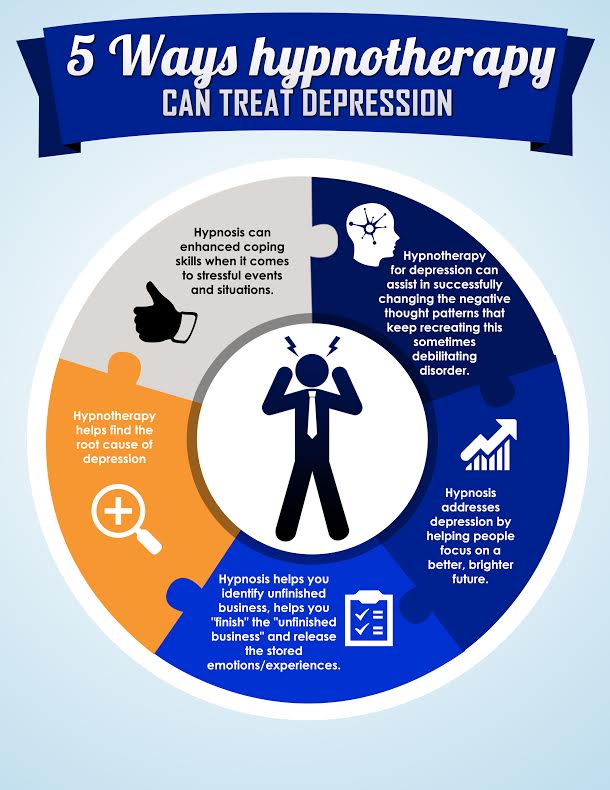 Moreover, the normally dominant hemisphere during hypnosis is also active, and the activity of one hemisphere or another at any particular moment apparently depends on the type of task assigned to the subject. It follows that switching between hemispheres may not be the cause of hypnotizability, it is only part of the general ability of people who are well susceptible to hypnosis to move from one state to another - to withdraw. Work on the study of the links between hypnosis and brain activity has not yet been completed. So, for example, early research seemed to indicate that highly hypnotizable people are those who easily enter the alpha state. Alpha waves (8–13 Hz) are “that noise produced by the brain when the brain is awake but does not work much,” for example, a person is already awake, but keeps his eyes closed. However, current data suggest that hypnotizable subjects, and perhaps hypnosis in general, are characterized by a slower theta rhythm (4-7 Hz), corresponding to a state of drowsiness.
Moreover, the normally dominant hemisphere during hypnosis is also active, and the activity of one hemisphere or another at any particular moment apparently depends on the type of task assigned to the subject. It follows that switching between hemispheres may not be the cause of hypnotizability, it is only part of the general ability of people who are well susceptible to hypnosis to move from one state to another - to withdraw. Work on the study of the links between hypnosis and brain activity has not yet been completed. So, for example, early research seemed to indicate that highly hypnotizable people are those who easily enter the alpha state. Alpha waves (8–13 Hz) are “that noise produced by the brain when the brain is awake but does not work much,” for example, a person is already awake, but keeps his eyes closed. However, current data suggest that hypnotizable subjects, and perhaps hypnosis in general, are characterized by a slower theta rhythm (4-7 Hz), corresponding to a state of drowsiness.
Experimental data indicate that the sensitivity to hypnosis of each individual can be improved, as if it were some kind of skill available for learning. Although the experience of practicing hypnologists shows that the increase in the level of perception is rather associated with overcoming the initial resistance. It's not that patients learn something, it's just that they become less fearful and begin to trust the doctor more. There is another point of view - a rather strong and interesting theory - according to which it is easier to hypnotize a person when the natural rhythms of his body proceed in a relaxed state. Is it possible to resist hypnosis, as, for example, did Kim in the novel by Rudyard Kipling (1901), repeating the multiplication table to himself in order to prevent the hallucinations he was ordered to see? Yes, you certainly may. You must be willing to succumb to hypnosis, otherwise it is useless. There are ways to deal with your reluctance, and as I said, Milton Erickson was a master at that.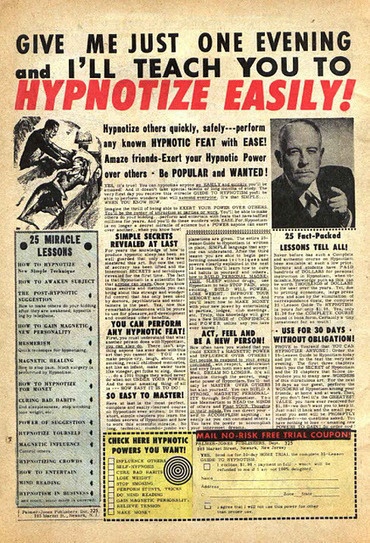 But even for him, in order to successfully overcome the resistance of the patient, it is necessary that he subconsciously wants to be hypnotized, despite the protests of his mind.
But even for him, in order to successfully overcome the resistance of the patient, it is necessary that he subconsciously wants to be hypnotized, despite the protests of his mind.
Ilya Melnikov Is it easy to hypnotize you?
Ilya Melnikov Are you easily hypnotized? All rights reserved. No part of the electronic version of this book may be reproduced in any form or by any means, including posting on the Internet and corporate networks, for
Where to start?
Who to start with? No matter how paradoxical it may sound, but quite often friendship between families arises thanks to children. Children can study in the same class, engage in the same circle, group or sports section, etc. First they get to know each other, and then their mothers “pull up”
Who wins?
Who will win? The function of regulating someone else's behavior does not even require a computer for its simulation. In fact, any person sitting in front of the dashboard - whether in the cab of a truck, in the command compartment of an airliner, or in the power distribution room
In fact, any person sitting in front of the dashboard - whether in the cab of a truck, in the command compartment of an airliner, or in the power distribution room
Tip Seven Find out at a glance who you can rely on. Signs of a person's reliability
Tip Seven Find out at a glance who you can rely on. Signs of a person's reliability It often happens that we see a person for the first time, and at the same time we need to find out how much he can be trusted and whether it is worth dealing with him. Learn at a glance
4. Who can and should be "analyzed"?
4. Who can and should be "analyzed"? Initially, psychoanalysis was developed mainly for the treatment of neuroses. Over time, it turned out that not only obvious neurotics, but also many other people can benefit from it. Psychoanalysis turns out to be particularly0003
Who is this book for
Who is this book for? This book is intended for psychologists, priests, doctors and nurses, lawyers, personnel managers, salespeople, actors. .. A psychologist must know how people experience their emotions. He must have an idea of what he can say about feelings
.. A psychologist must know how people experience their emotions. He must have an idea of what he can say about feelings
Who raised whom and how
Who raised whom and how The same Eric Bern, in addition to game scenarios, singled out the types of players. How often do they meet in life? Every day. The most characteristic roles of childhood are carried over into adulthood, so the following two types of players appear who set the tone for
Who is this book for?
Who is this book for? “I would like to be different”; “I don’t like the way I live at all”; “I’m an unlucky person”; “Everything is wrong with me” ... I heard these and similar phrases many times from my acquaintances, friends, guys, who worked and just talked. Yes, and she said a lot of them herself
Words can kill, words can save.
 ..
.. Words can kill, words can save... When your speech is pure, the words have an impact not only on you but also on those around you. To speak pure speech is to speak only those words that are true, which raise the spirit and self-consciousness of one's neighbor and his value in
Who can be considered a creative person?
Who can be considered a creative person? In psychology, a creative person is also called self-actualized. Self-actualization is the process of turning a person into what he wants and can become, that is, it is a full and deep disclosure of talents and abilities
Question 7. Can mood swings and pain be reduced for those with severe premenstrual syndrome?
Question 7. Can mood swings and pain be reduced for those who have pronounced premenstrual syndrome? It is possible and necessary. Too painful periods serve as a signal that something is wrong with you in the female line. Maybe it's some kind of
Too painful periods serve as a signal that something is wrong with you in the female line. Maybe it's some kind of
And you can set up a group of people against someone with the help of marking.
Or you can set up a group of people against someone with the help of marking. - I recently watched a detective. The main character is looking for a criminal (a marker for an enemy), and then it turns out that the criminal is his acquaintance (a marker for him), and when he finds out the truth, he does not know what to do,
"You can! Of course you can!.. Follow the guys”
"Can! Of course you can!.. Follow the guys.” It seems to me that my father was always engaged in science, every minute of his life, no matter what he did, and not only when he was sitting at his desk. He had very difficult working conditions, or rather, no working conditions
| Navigation: home Random Page Feedback TOP Interesting to know Favorites Top: Theoretical significance of the work: A description of the theoretical significance (value) of the research results should be present in the introduction. History of development of optimization methods: Kuhn-Tucker theorem, Lagrange method, the role of convexity in optimization... Interesting: Spread of cancer to other organs distant from the stomach: There are no characteristic symptoms of stomach cancer. Severe symptoms appear when the tumor ... What to do if you have leukemia: First of all, you need to find out if you suffer from any mental illness ... Artificial elevation of the surface of the territory: Options for artificial elevation of the surface of the territory must be selected based on an analysis of the following characteristics of the protected area ... Disciplines: Automatic Entrepreneurship Instrumentation Programming Production Industry Psychology Radio communication Religion Rhetoric Sociology Sport Standardization Statistics Construction Theology Technology Trade Transport Pharmacology Physics Physiology Philosophy Finance Chemistry Household Drawing Ecology Economics Electronics Energy Jurisprudence |
- You said that suggestion works best when it is imperceptible, when it is not perceived as a suggestion. Is it possible to hypnotize a person against his will, by force, when a person knows that he is being hypnotized and resists?.. — Yes, but depending on whom, who, when ... Any ordinary hypnotist will easily hypnotize an average schoolchild, from seven to thirteen years old, with any initial resistance. A teenager is already more difficult. The student is even more difficult. A soldier or a policeman - take it easy. Deputy of the State Duma - depending on what ... The suggestibility of people is very different, both quantitatively and qualitatively, very fluctuating, changeable. Age, intellect, personality development, character, health, a person's life situation, socio-psychological situation, and weather mean a lot ... In the twenties of the twentieth century, Dr. Heidenheim experimentally hypnotized a company of German soldiers. Under fear of punishment, the authorities forbade them to fall asleep. Some fell asleep out of fear, others, perhaps out of internal contradiction or even a subconscious desire for punishment. The law worked, which I studied in special experiments and which I call the Law of Psychostatistics. This law, very broad and very important for business, culture, politics and other spheres, ensures the growth of the small in the big, and in the limit - the transformation of the small into the great. If Heidengheim had hypnotized not the company, but the platoon, the prohibition of the authorities would have worked more effectively. It would work even more reliably if there were no more than five soldiers, and if only three, it would almost certainly be one hundred percent, that is, the hypnotist, most likely, would not have succeeded. This is explained not only by the fact that people with increased suggestibility (hypnotizability, religious readiness) always make up a certain percentage of the population and their detection in a large mass is statistically more likely than in a small number. The point is also that each hypnotized (and not necessarily sleeping! ..) influences with his state on those who have not yet been hypnotized and in itself becomes a powerful hypnotist, a conductor of a single inspiring will. All this is subject to precise mathematical calculation. The more such dissipating-merging conductors per unit of time and space and the greater the numerical mass of the audience, the faster and stronger the chain reaction of increasing suggestibility goes in it. That's why show businessmen drag paid teams of clackers to concerts of their next promoted star - applause-screamers that excite the audience, and experienced organizers of mass sales arrange performances from them, where the process is initially launched by figureheads, and then it goes on, with increasing excitement , on its own. The same, in general, applies to the organization of any mass process; many particulars, various subtleties, I will not disclose now ...
State security ram
— Did Van have to overcome the resistance of the hypnotized? — Of course. Hypnotization is conquest. Resistance, conscious or subconscious, is almost always present and may well be combined with a desire, even a strong desire, to be hypnotized. Duality, sometimes to the point of internal discord, self-conflict - this is normal for a person. Working with patients, I first try to discern such duality, to see its components, and only then, if the treatment requires it, I find ways to bypass - not frontal breaking, I pay attention - but bypassing resistance. In medicine, that's just the way it is. But at the mass séances that I held during the time of the ona, it also happened to break through the defenses by ramming... I remember a séance held within the walls of some secret institution. They sent a car and didn't say where they were taking it. They promised to pay a modest, but very useful money at that time. At the entrance, strict people for a long time and thoughtfully checked the correspondence of the passport with the physiognomy and something else, more and more ... I began to more and more guess where I had ended up ... Military officers and very serious comrades in civilian clothes sat alternately in the hall. The atmosphere hung some kind of soap-making ... I understood right away that my comrades in military and civilian clothes wanted to learn as much as possible about hypnosis, and they knew that I was a great and powerful hypnotist even better than I did. The comrades are not opposed to me demonstrating the possibilities of hypnosis on themselves. But... in a way. When you work with the audience, you feel the people collectively-separately, like a water surface with waves that can be like this or that, but in the predominant mass more or less correspond to the general state of the elements, the level of excitement. The lake of this hall felt somehow black and full of holes, with gaping funnels. The comrades both wanted hypnosis and were very, very afraid of it. The more they wanted, the more they were afraid, the more they were afraid, the more they wanted... Even during the preliminary monologue, I caught a couple of such physicists in the front ranks, from one look of which you already feel like in a bullpen. There were, of course, other eyes, curious, benevolent, normal; but these capases really cheered me up, almost to the point of ball lightning. The show was tough, the voice boomed… There are about two dozen military and civilian soldiers on the stage. Some of them, already translucent, I dragged - that's right - out of the hall, and some of them I celled myself, I agreed in advance such a possibility so that voluntary or involuntary observers could see nose to nose what was happening with the rest. (However, always and not in the KGB auditorium there are those who do not want to believe their eyes. Not a single hysteria, everything is very quiet… I escort two resident pretenders with trembling eyelids and shortness of breath from the stage immediately and menacingly. Sleepers in the hall are mainly in the so-called lethargic trance: there is an irresistible heaviness in the body, do not move, do not move either eyelid or tongue, but the consciousness of what is happening is glimmering ... And on the stage, everyone has stone stiffness of muscles, convulsive clamping stiffness - everything is in a trance , but anxiety is clearly over the top and outweighs. Aha… To show hocus pocus, all of you darlings will have to be melted by the method of group infantilization and mutual induction — nutte!.. — Join hands with everyone! Like in a kindergarten!. "If this Jew hypnotizes Vasyuk, x(..) he will get a lieutenant colonel from me." This phrase (one can vouch for the literal accuracy of the reduction of the main parameters) was uttered with restraint by an officer sitting next to my friend with the rank of colonel, referring to a neighbor in the same rank. I couldn't hear it; my friend felt uneasy, hastily handed me a note: "You'll feel better there, otherwise they'll help you." But it was too late, because by that time the Jew (albeit in this way, although only partially) had already completely hypnotized Vasyuk, and he did not understand, going into a rage, from whom and what the note was talking about, he got excited and angry. Comrade Vasyuk, major of state security, after the infant warm-up showed the best somnambulistic qualities of a congenital excellent student in combat and political training. The untranslated part of the hall was horrified by this last event. The dog was told to sleep - curled up. When they woke up and allowed Vasyuk to become Major of State Security again, they could not remember anything at all. Excuse me, comrade major, I did not know that I was hypnotizing you in front of the authorities, if I had known, I would have hypnotized him too so that he would be promoted in rank. And let Comrade Colonel not call names and don't swear at the letter "x". — Did you have any troubles or life complications after this session? — Not really troubles, but some significant events… They set up a phone tap. They gave an unspoken order not to increase the circulation of books. One very attentive and warm-hearted friend of the journalists, who had been grazing me for several years in a row, became more active. The chicanery from the police became more frequent. But they didn't touch it directly. As the same Very Well Known told me, information circulated in informed circles that Levi with one look, without words, can not only cure impotence, but vice versa ... — Really?.. — I have not refuted this information. In life I try to follow the rule: do not do everything, but be able to do everything.
Correction of the future
- It is believed that modern hypnosis, Ericksonian, for example, is carried out without putting the patient to sleep and this is more advantageous than "classical". — The word "HYPNOSIS" is ONE of many examples of the entrenched vagueness of terminology. Almost like "love" - everyone understands his own ... Hypnosis, literally, is sleep - induced, suggested sleep, and nothing more. The term denotes one of the human states. This state is achieved by an action called suggestion or suggestion. If we follow the terminological rigor, then Erickson's "hypnosis" is not hypnosis, but only one of the techniques of suggestion, inducing a trance. And what, one wonders, is trance?.. And this is a state in which suggestibility, on the one hand, is extremely increased, and on the other hand, it is extremely reduced ... - Not very clear. Can you be more specific? — The musician and the listeners captured by his music are in a trance. In a trance - an actor, in a trance - a spectator, if the actor acts on him. In a trance - no need to explain - kissing lovers, people fighting or arguing furiously. Albert Einstein was in the deepest trance for several days – those very few days when he wrote those six and a half pages on which the newborn theory of relativity fit. But the rest of his life was also a colossal creative trance... Readers fall into a trance when they are given the trance in which the author worked... Trance is a state of selectively concentrated attention, which keeps itself on its subject without additional efforts. A state of selectively heightened suggestibility, a hurricane wind in one window. Now I am answering the question of whether it is necessary to put people to sleep for hypnotization. As a rule, for successful suggestion, sleep - that is, the introduction into a hypnotic state in the strict sense of the word - is not necessary. But for certain types and degrees of suggestion, lulling is necessary, and more and above all, when it is required to separate the integrity of a person's soul from the partiality of his personality and his body. — For example?.. — Compulsive neuroses. All kinds of fears. Unmanaged addictions - from drugs to love. Psycho-bodily diseases: skin, gastrointestinal, cardiovascular… Some cases that mimic psychosis and psychopathy, especially in children, adolescents and young adults. Some depressions, namely DEPENDENT, are very serious... — Is it true that in a hypnotic sleep it is possible to make available the deepest layers of the subconscious, the most hidden traces of memory? See forgotten dreams? Recall the long forgotten past and then the former incarnations of the soul, past lives?.. What can you tell about hypnotic reincarnation? — First of all: both in ordinary, natural sleep and in waking meditations — everything that we have is available, all doors are open — only know how to enter… -convergence, vertical descent — into some hidden, closed or open — farther, inside — space… We sink into sleep, fall through… Associations with a cave, with the underworld, with the womb… The deeper the dream, the closer we are to to its primitive state - to infancy, to embryonicity. There are many steps on the transition ladder leading from wakefulness to falling asleep, where the light of consciousness imperceptibly passes into drowsy twilight, into the darkness of oblivion... , pushes, not allowing, however, to fail uncontrollably; if someone's care, imperious or softly insinuating, decides for us by voice or touch where to stop... Then we can fall asleep deeply, but Someone will keep us on a leash and, if he wants, will pull us back up so many steps; we can fall asleep disintegrated, in parts - the muscles, for example, are immobilized, but self-consciousness is not turned off, it works. Or vice versa... It is clear that in such a state, having entrusted control over ourselves to another, we are almost not subject to ourselves, the master of the situation is the hypnotist. However, he may not understand what is happening, and most often this is the case. In a semi-disconnected state, the brain and body most readily recall the distant species past and kinship with other creatures - with tree sloths, for example, for which "waxy flexibility" of muscles, catalepsy is a normal state. Precisely arranged, multi-stage suggestion can awaken such deep layers of memory that neither the hypnotized person nor the hypnotist suspects. You can revive scenes from the distant past, seemingly irretrievably forgotten - as in the case, which became known to the whole world in the sixties: a Hungarian resident, a 35-year-old miner, who was stolen by the Nazis from Ukraine as a boy, remembered his real name with the help of a hypnologist and surname, found his native village and mother… You can return long-lost skills and abilities. Here is a sixty-year-old woman splendidly, easily dancing the long-forgotten dance of her youth... A twenty-five-year-old turns into a seven-year-old first-grader and diligently writes letters in a truly childish handwriting. The true revival of memory in such cases must be carefully distinguished from brilliant acting imitation - from an inspired role played with transcendent authenticity, purely according to Stanislavsky. If we suggest to a twenty-year-old somnambulist that she is a hundred-year-old old woman, we will see an amazing living in the image, perhaps prophetic, but certainly not a recreation of the past, which was not. Bending over, the somnambulist will move in small steps, grunt, breathe heavily, speak creakingly ... She will feel both difficulty in movements, characteristic of extreme old age, and dry mouth ... In adult somnambulists who are suggested that they are children, typical childish changes in the electroencephalogram and handwriting are observed. No actor can do that. These people live anew in their childhood, remember the forgotten, improvise… This is possible only in dreams; but dreams are not controlled (if this is not specially trained) - here everything is guided and controlled by the hypnotist. This is already a combination of psychoanalysis and hypnosis - a powerful healing bundle. When using it, one must keep in mind that some thin thread between hypnotic experiences and current reality, between the "other" world and "this" still remains. Impressing eleven of my somnambulists that they were just born babies, I observed in them sucking movements, and special reflexes that only newborns have, and the characteristic twisting of the fingers and toes, and the buoyancy of the eyes ... However, none of them ever I didn’t cry like a small child (although three of them had infantile cooing and something like grunting) and, I beg your pardon, didn’t peed and didn’t crap one’s pants. Why - guess, perhaps, you can ...
"The catosaurus ate me…"
As for reincarnation of souls, past lives, reincarnation… There is no smoke without fire, there is no myth without… too, but for some reason less). According to the ritual scenario, I inspired her - in the already achieved deep somnambulism - that she was living anew in her first earthly incarnation. He did not designate an era or tenure. Everything came from herself ... Birth time turned out to be Paleolithic; our lady was there a young man named Hick, a gatherer of fruits and roots. Hick is sitting peacefully in the clearing, digging up something under a bush... Suddenly he looks around and freezes in horror - the next moment a wild scream, convulsions, blackout... I quickly wake up, shake, rub my ears, yell - I can't hear, I can barely breathe, I can't get up , I had to give ammonia ... "What happened to you, who was it?" — "I was eaten... I was eaten... by a Cattosaurus..." Even before the session I guessed that someone had eaten it "there", I could not only imagine that this monster is so simply called. I had to quickly put to sleep again and replay the fatal scene with an additional character - Yeguagu, the great totem god, who killed this very catosaurus in an excellent way. After this procedure, the lady's cat panic disappeared, as expected, although the general rejection of the feline breed remained in force. There is, of course, something more serious to tell about this, but a little later… — On what factors does hypnotizability depend? - If you are able to concentrate normally, emotional, impressionable and at the same time fall asleep easily enough, your hypnotizability will be guaranteed to be high - provided, however, that it is not blocked by anxiety, distrust, skepticism, morbid pride and excessive intellectualism. The art of the hypnotist and consists of 99% in lifting these blockades. To hypnotize healthy, cheerful and confident people is a trifling matter. And for neurotics with defective self-esteem, the scissors between the desire to entrust oneself to someone's superior will and the fear of "losing oneself" are especially sharp. The more developed the consciousness, the more intelligent the person, the more selective his suggestibility and the less dependency in it. It is better to work with such patients in the genre of individual sessions with analytical support, group practice does not work ... If you trust the hypnotist, are normally suggestible, but for some reason find it difficult to fall asleep (too excitable, afraid of the dark as a child...), then your hypnotic state is likely to be in the form of a waking active trance. Consciousness shrinks, roles, images, etc. can be easily suggested, but mobility and a sense of wakefulness remain. Memorization - when like ... An experienced hypnotist, recognizing such a nature, immediately bypasses lulling, in the Ericksonian way; the inexperienced or the dull persists in trying to put him to sleep, and thereby destroys the bond. Some of the patients, with the help of such sorcerers, come to me, having already enrolled themselves in the category of "intractable. |
 ..
.. 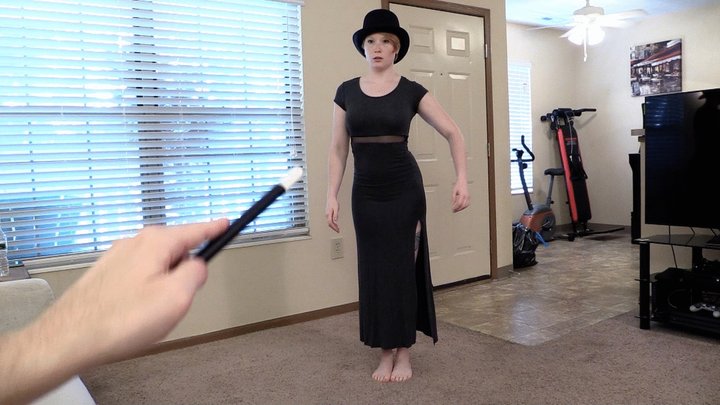 And hypnosis, you said, can be imperceptible, and this is the strongest hypnosis...
And hypnosis, you said, can be imperceptible, and this is the strongest hypnosis...  Some of the soldiers, thirty percent, still fell asleep. One can guess: those who were hypnotized by the very order “don’t fall asleep in any case” had an inspiring effect: if they order it like that, it means, oh ...
Some of the soldiers, thirty percent, still fell asleep. One can guess: those who were hypnotized by the very order “don’t fall asleep in any case” had an inspiring effect: if they order it like that, it means, oh ...  But the regiment would have given Heidenheim a result of about sixty percent in his favor.
But the regiment would have given Heidenheim a result of about sixty percent in his favor. 
 An invitation to speak "somewhere out there" was arranged for me by a friend who came in.
An invitation to speak "somewhere out there" was arranged for me by a friend who came in. 
 Even if these eyes, by hypnotic order, close themselves and cannot open ... Yes, it was, you can already reveal a terrible secret, the audience of the Higher School of the KGB. Probably right and it's good that I didn't know about it beforehand.)
Even if these eyes, by hypnotic order, close themselves and cannot open ... Yes, it was, you can already reveal a terrible secret, the audience of the Higher School of the KGB. Probably right and it's good that I didn't know about it beforehand.)  . March in single file!.. And now crawling... And now jumping, guys, jumping!.. Stop - EVERYONE SLEEP! And now WARNING! - eyes remain closed! — line up in pairs!..
. March in single file!.. And now crawling... And now jumping, guys, jumping!.. Stop - EVERYONE SLEEP! And now WARNING! - eyes remain closed! — line up in pairs!..  With open, unblinking eyes with motionless dilated pupils, he looked at the Jew as at an almighty god, chief and father in a triune hypostasis. Papa Gide let the boy Vasyuk play in the sandbox, then in the sun on the seashore he allowed him to warm his tummy. The sun got hot. Vasyuk took off his major's tunic, wanted to undress further, but Papa Gide did not allow, he changed the suggestion, turned him into a small dog. Vasyuk barked, wagged his tail and raised his leg to another major of state security.
With open, unblinking eyes with motionless dilated pupils, he looked at the Jew as at an almighty god, chief and father in a triune hypostasis. Papa Gide let the boy Vasyuk play in the sandbox, then in the sun on the seashore he allowed him to warm his tummy. The sun got hot. Vasyuk took off his major's tunic, wanted to undress further, but Papa Gide did not allow, he changed the suggestion, turned him into a small dog. Vasyuk barked, wagged his tail and raised his leg to another major of state security. 
 Do I need to be put to sleep for hypnosis?
Do I need to be put to sleep for hypnosis?  Players, fans, an excited crowd… A shaman performing a shaman…
Players, fans, an excited crowd… A shaman performing a shaman…  In other words: when you have to free a person from himself.
In other words: when you have to free a person from himself. 
 So, perhaps, our tree ancestors also slept, easily maintaining the most bizarre poses and not feeling pain and inconvenience ... genetic, species. There is nothing supernatural in this, this is possible and not only in hypnosis, for we are whole, and at every moment of life our whole life in all its dimensions abides in us.
So, perhaps, our tree ancestors also slept, easily maintaining the most bizarre poses and not feeling pain and inconvenience ... genetic, species. There is nothing supernatural in this, this is possible and not only in hypnosis, for we are whole, and at every moment of life our whole life in all its dimensions abides in us.  Here she is, already three years old, speaking in a childlike voice and sitting on the bare floor, playing sand... played a piece by Tchaikovsky on the piano, and not bad.
Here she is, already three years old, speaking in a childlike voice and sitting on the bare floor, playing sand... played a piece by Tchaikovsky on the piano, and not bad.  Along the way, it is very easy to "correct the past", which is used - to correct the future - in cases where it is quite clear that some specific childhood experiences are the cause of subsequent adult difficulties and suffering.
Along the way, it is very easy to "correct the past", which is used - to correct the future - in cases where it is quite clear that some specific childhood experiences are the cause of subsequent adult difficulties and suffering.  She did not ask to be cured of her catophobia, on the contrary, she even cultivated this quirk. But for the sake of curiosity, she persuaded me to put her into a state of "hypno-reincarnation".
She did not ask to be cured of her catophobia, on the contrary, she even cultivated this quirk. But for the sake of curiosity, she persuaded me to put her into a state of "hypno-reincarnation". 



